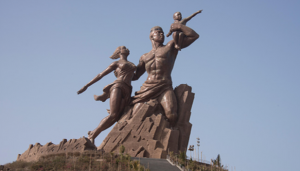Field Trips
Since April 4, 1960, Dakar has served as the political, economic, and cultural hub of Senegal. It is situated on the Cap-Vert peninsula in West Africa. Participants in the 17th ACA Annual Cashew Conference & Expo will have diverse options for touring Dakar, a vibrant and historic city.
Option 1: Dakar City Tour
A full day dedicated to touring the beautiful city of Dakar. By taking this trip, participants shall visit Senegal's capital city and discover memorable sights notably the Independence Square and la Corniche Ouest de Dakar, a fantastic stretch of road that looks out over the North Atlantic Ocean. With this choice, participants will also have the chance to explore the historical museum of black civilizations and enjoy a once-in-a-lifetime experience at the iconic Monument de la Renaissance, the world’s highest.
- Monument de la Renaissance Africaine

52 metres high and made of copper, it is the world's tallest statue with a breathtaking sculptural design! The monument depicts a man with bulging muscles emerging from the crater of one of the Mamelles hills. He is carrying a child on his left arm while enveloping a woman with the other.
The Monument of the African Renaissance is a monumental sculptural group, the work of sculptor Virgil Magherusan, located in Ouakam, a district of Dakar which was erected on one of the two conical volcanic hills overlooking the Senegalese capital, the Mamelles, the higher of which already bears the Mamelles lighthouse.
- Museum of Black Civilizations

Senegal's Museum of Black Civilizations, a repository for African art, culture, and history, opened its doors in December 2018. It is a creative hub that will aid in defining the continent's future sense of identity with a capacity for over 18,000 items of art among which some reclaimed from the lost history of the continent and those returned works of art that were taken during the colonial era.
The Museum of Black Civilisations (MCN) is a public establishment of an industrial and commercial nature. The structure of the MCN is reminiscent of a small round hut, very common in Africa, but here it is 14,000 square metres on four floors. A must-visit in Senegal as it traces African origins and above all, it was voted by Time magazine as one of the 100 top places to see in the world.
- The Senegalese Independence Square

Dakar's Place de l'Independence is the beating heart of the city. Designed symmetrically, it contains majestic colonial buildings, including the Governance (office of the French governor) and the Chamber of Commerce.
- Dakar Corniche

The Dakar Corniche is one of the two main road infrastructures in Dakar. This 2 x 2 lane road with a central divider, underpasses, roundabouts, and sea views crosses four main contrasting sequences. The participants will have the opportunity to admire the beautiful architecture of la corniche.
Option 2: Gorée Island


Gorée Island is a UNESCO World Heritage Site. It holds the history and beauty of the site as the symbol of the memory of the slave trade in Africa, with an atmosphere full of history and emotion. The streets of the island have colourful bougainvillea lanes.
Participants who will choose this option will travel 2 km from Dakar by boat to get to the island and visit the door-of-no-return to have an idea of how millions of African Slaves were being sorted out and led into the Slave ships yelling for mercy. The Castel also offers a beautiful view, and strategic position on the southern tip of the island, which offers a magnificent panorama of the mainland.
Option 3: Factory Visit
Participants who select this option will be visiting a processing factory in one of the cashew-producing zones of Senegal.
Participants will gain a practical grasp of the various stages of cashew processing, the working conditions in Senegal, as well as the demands and challenges faced by the Senegalese Cashew Processing, through a visit to this facility.




